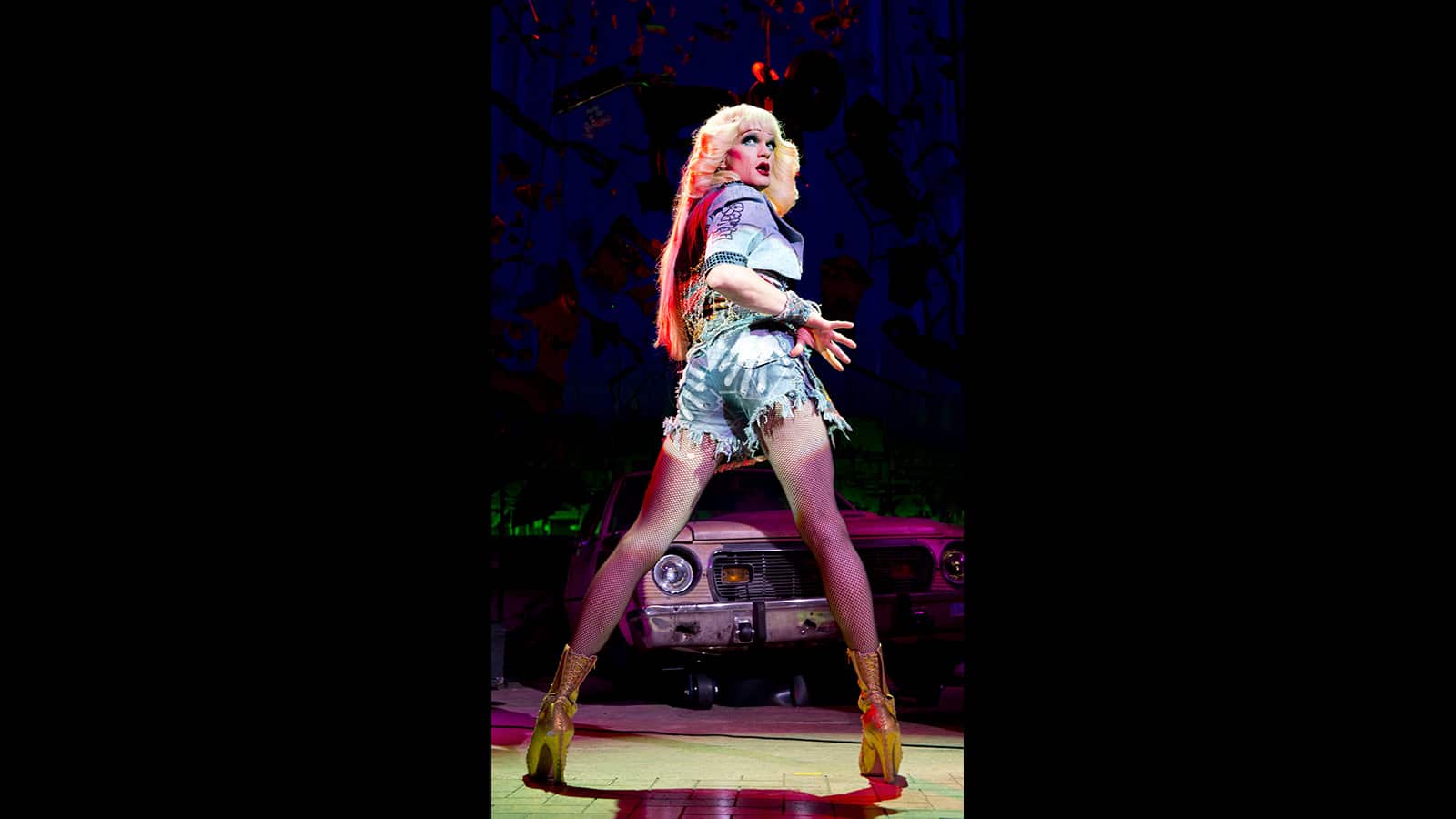The M'elodie center array is working out perfectly for the vocals. It's a rock concert sound, but we also needed great intelligibility along with vocal punch, because the lyrics carry the story line. On both counts, the M'elodies deliver every time.”
Tim O'HeirSound Designer, Hedwig and the Angry Inch
Featured Products
600-HP, Galileo 616, M2D, Melodie, UP-4XP, UPJ-1P, UPJunior, UPQ-1P, USW-1PSound Designer Tim O’Heir has chosen a Meyer Sound system built around M’elodie line array loudspeakers to reinforce the Tony Award-winning Broadway revival of the musical comedy Hedwig and the Angry Inch. The production entertains audiences with a high energy that Time Out New York says “makes Broadway rock harder than it ever has before.”
“The M’elodie center array is working out perfectly for the vocals,” says O’Heir. “It’s a rock concert sound, but we also needed great intelligibility along with vocal punch, because the lyrics carry the story line. On both counts, the M’elodies deliver every time.”
The main Meyer Sound system is anchored by dual front hangs of eight-each M2D line array loudspeakers flanking a center hang of 11 M’elodie loudspeakers, while a cardioid array of three flown 600-HP subwoofers provides low end. Two UPJ-1P VariO loudspeakers provide down fill, two UPQ-1P loudspeakers provide stall fill, and 16 UP-4XP loudspeakers cover front and box fill. System optimization is courtesy of a Galileo loudspeaker management system with five Galileo 616 processors. Designed in a collaborative effort between O’Heir and audio consultant Kai Harada, the system was supplied by Secaucus, N.J.-based Production Resource Group.
For Harada, the flexible rigging of M’elodie was a huge benefit. “It’s a tall theatre, with three levels and short throws, so I needed the precision aiming of the M’elodie rigging to hit the seats and skip the balcony fronts,” says Harada. “And M’elodie is also just a great-sounding box.”
On stage, two guitar amplifier cabinets each conceal a UPJunior VariO loudspeaker while a USW-1P subwoofer supports the bass guitar. All three sources are controlled from the monitor desk.
“I appreciate that fact that Meyer Sound designs everything that you need to make a system work in house,” says O’Heir. “When you stick with one company that really knows what they’re doing, it all comes together and you avoid headaches. So when Kai proposed a Meyer Sound main system, I was confident it would all work out the way we wanted it to.”
The system is mixed on Midas PRO9 and PRO2 consoles for FOH and monitors, respectively. Performers use Ultimate Ears IEMs coupled to Shure RF systems and Sennheiser vocal microphones.

